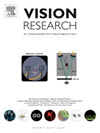1. Vision Research is a journal devoted to the functional aspects of human, vertebrate and invertebrate vision and publishes experimental and observational studies, reviews, and theoretical papers firmly based upon the current facts of visual science. Vision Research also accepts experimental studies in which clinical material has been used to address an issue of basic research interest, or where basic research methods have been used to address an issue of clinical importance, or where basic research may have, as yet unapplied, clinical relevance, as far as mechanisms of function or dysfunction of the visual system are concerned. The words clinical and vision sciences should be interpreted in the broadest sense, as represented by the areas of expertise of the members of the Editorial Board. Papers reporting detailed investigations are encouraged and authors should be advised to include enough background material in the introduction of their papers so that they are comprehensible to the non-specialist. The purpose of theoretical papers is to give a higher sense of order to the facts as they are presently known, or to point to new observations which can be verified experimentally. Papers dealing with questions in the history of visual science should lay stress upon the history of ideas in this field. Vision Research has always welcomed the broadest interpretation of visual science. 2. Rapid Communications. Apart from the regular papers that will be published in the appropriate section, Vision Research also has a general section, called Rapid Communications, for publication of highly topical material with a length of about 2000 words on a fast publication track. 3. Vision Research also welcomes mini reviews. A mini review is not intended to be a comprehensive history of the subject, but rather a survey of recent developments in fast-growing and active areas of vision research covering only the last few years. 4. Letters to the Editor. If in response to a published article a letter to the Editor is received, this letter will be sent out for review and at the same time be forwarded to the author(s) tackled. If the letter is accepted, the author(s) of the initial paper will be invited to write a reply within a short period of time, and the reviewers of the letter will be asked to review the reply. 5. Obituaries. Vision Research has a restrictive Obituary policy. Obituaries should be submitted to the appropriate Section Editor and the Chairman, and should not exceed a length of one printed page including photograph. 6. Special non-recurrent symposia may be published in Vision Research. Symposium organizers are requested to contact the Chairman. The decision is made by the Editorial Board of Vision Research at the annual meeting during ARVO.
